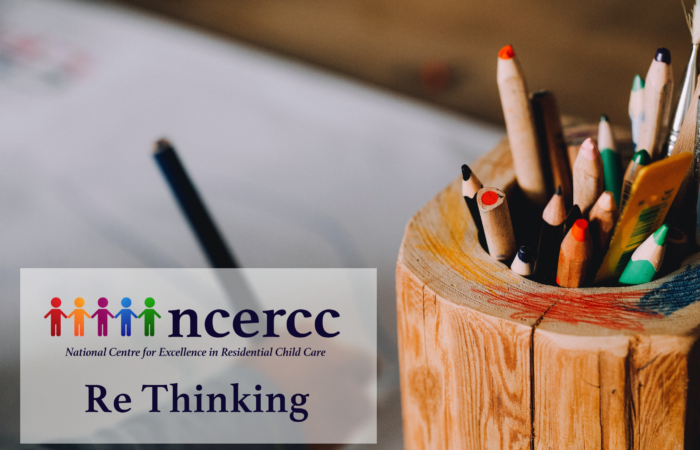
The Innovation Programme and the Care Review started and ended in the wrong place
In a situation where permanent crisis and instability is normal how do you find your way through?
Maybe there are readers of Greek mythology and lovers of film amongst us. Maybe you are one of them and have sometime drifted to find yourself in between the clashing rocks in the story of Jason and the Argonauts?
The Argo is on a mission and after several episodes they face sailing between huge cliffs which clash together. They let a dove fly between and follow, lots of hard rowing. They get through. As soon as one ship had made the passage they would no longer clash.
Greek myths were written to offer lessons. Here is a situation of voyagers finding themselves in a situation where potentially life annihilating forces are ready to destroy them. ‘I don’t want to be here. I didn’t ask to be here’. The cliffs are related to fear and to the different kinds of possible behaviour in the face of hostility.
Perhaps you recognise this as a description of the situation residential child care sector finds itself in today?
The many actors and actions in creating the situation need to be recognised, understood and explored. The conditions are created. It isn’t one party or another but all parties everywhere, government, providers, commentators, organisations.
The current conditions for social work/care do not provide a secure base.
We live and work in a situation of insecurity, and in wider society plagued by insecurity.
We have an insecure economy and existence.
In such a situation though highly skilled people working extremely hard and produce many creative solutions, as individual and for individuals, it is not surprising that nothing has worked at a larger level.
Both the Innovation Programme and the Care Review started and ended in the wrong place
It is needs not symptoms we need to address
We need a facilitating environment.
If ‘I have’ I can come to know ‘I am’ and then ‘I can’.
It does not work in reverse.
Knowing an unintegrated state is one out of which integration takes place we can recognise that currently we are held (frantically) together, but we are not an integrated whole.
What we have with the Care Review is yet another set of unintegrated propositions.
It does not lead to integration that we would find in a strategy. It actively seeks to remove the structures that act to collect experiences that can be brought into a strategy. The fluidity of relationships is important but in themselves they will not create the strategy or structures needed. If we do not experience reliability we cannot establish dependence, the foundation of independence and interdependence.
We have inappropriate independence imposed upon our environment.
In place of continuity of experience, consistency, persistency and insistency all is placed into endless limitless, contingency, expediency, where all is determined by the immediate. In this conjuncture the future is as continuously boundaryless as the present.
We have been trying to operate as though there were needs led policymaking structures and processes and practices.
The consequence is we are placed in a permanent demand attachment seeking mode. We act to survive. We create a campaigning existence. We create our own professional territory within which to survive.
The spirit of the age has been ‘innovation’, actually in context this means being ‘disruptive’.
As any child care practitioner will know ‘being disruptive’ is a key indicator of something deeper needing recognising and must be given attention. It is a communication that a child has been placed into a situation they find challenging.
When traumatic events interrupt we react with panic and disruption. These are signals of distress.
Panic produces states of disorientation and a total loss of any sense of identity: the victim falls to pieces, immobilised or, more frequently, hitting out.
Disruption indicates the experience of not being kept safe from the unpredictable. It is seen easily in a situation where others are functioning is compulsively broken up
Innovation is designed and deployed to fragment what exists.
Innovation is by design deliberately transgressive and rule breaking. It also creates inappropriate centralising seeking safety.
When long-standing institutions, principles and norms of accountability are removed this creates disintegration.
If this is raised as an observation there is a reaction. Any disagreement or non-alignment is seen as opposition and is to be attacked and ‘othered’. Making reasoned criticisms of flawed policy has been met with exclusion rather than its expertise and experience taken seriously, considered and evaluated.
Do our professional ethics lead us to be prepared to continue as willing enablers? This means to enable more churn, more chaos, uncertainty, making it even more difficult for the sector to keep picking up the pieces that it already does.
Or act to address needs not symptoms. To enable the facilitating environment: to create the environment where workers and children experience ‘I have’ so I know ‘I am’ and ‘I can’.
Thinking of Jason, the doves are children sent through the passage. Jason’s dove was fortunate, it negotiated a safe passage and unlocked the route to safety. Do the Care Review or Innovation Programme create for our doves safe passage, or is it chance not certainty that plots their course?

